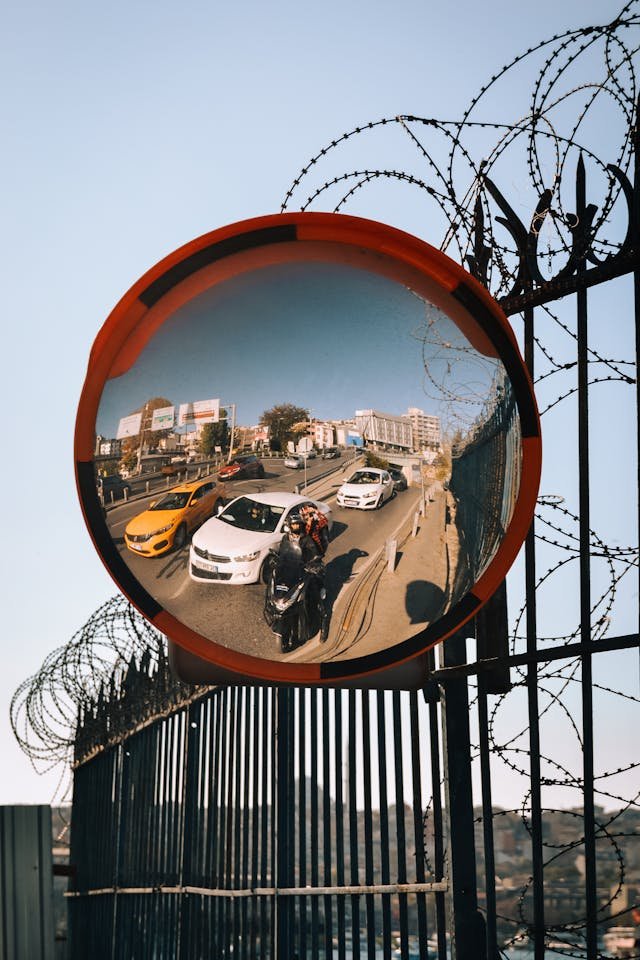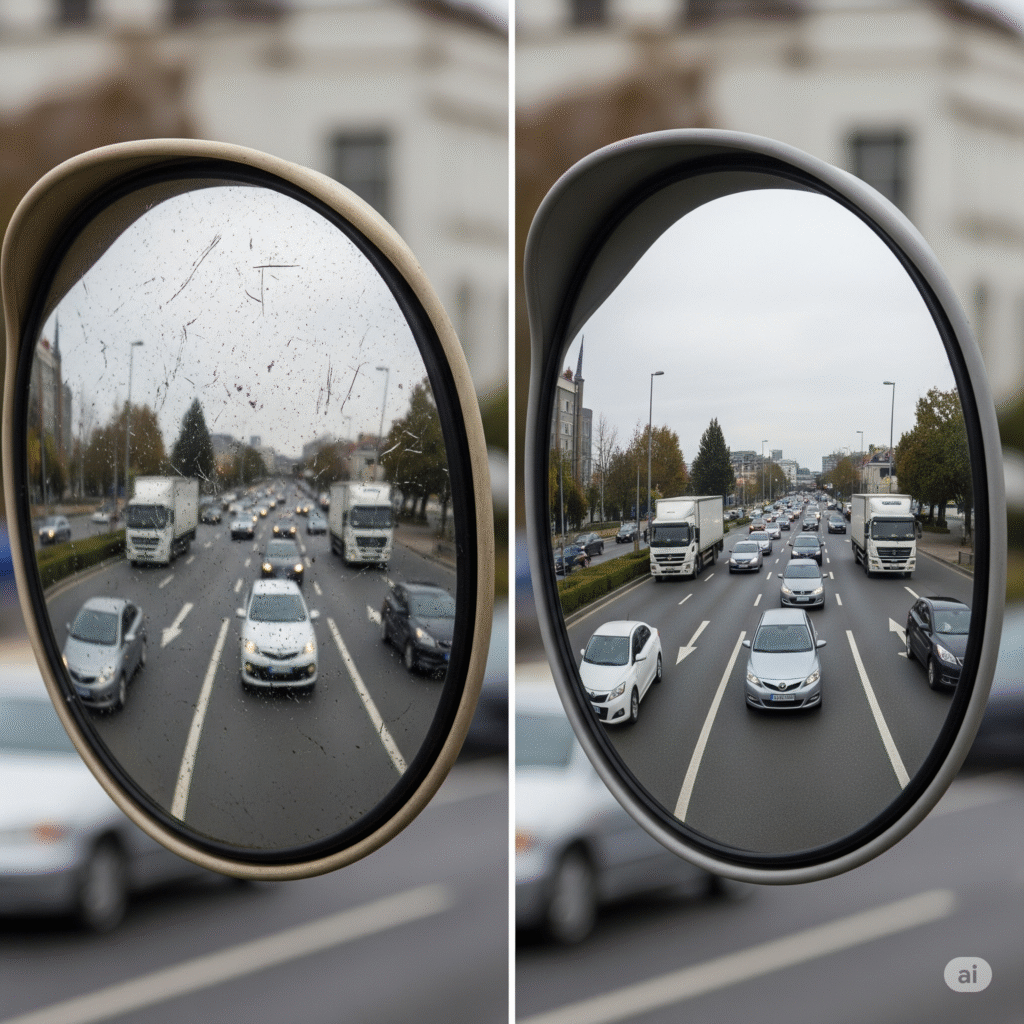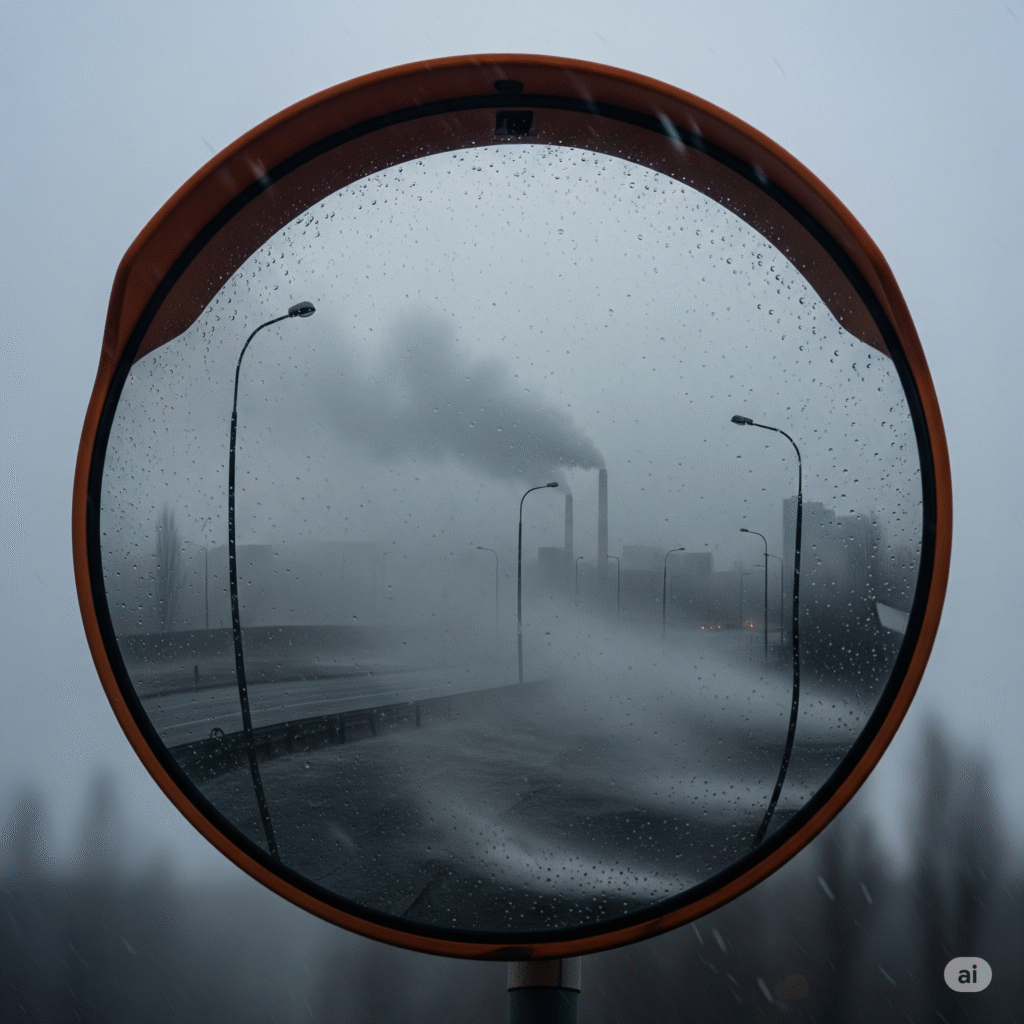In today’s increasingly congested urban environments and high-speed transportation networks, road safety is not a luxury—it is a necessity. One of the most practical and cost-effective tools for enhancing roadway safety is the convex traffic mirror. Whether mounted at blind intersections, installed in busy parking structures, or positioned along curved roadsides, convex mirrors—also referred to as traffic mirrors or road safety mirrors—serve a vital role in preventing collisions and improving driver visibility. But not just any mirror will suffice. The quality of a convex traffic mirror directly determines its effectiveness, durability, and compliance with safety standards.
This article explores the critical role that high-quality convex mirrors play in traffic management and safety infrastructure. It outlines why road safety demands not just any mirror—but a professionally manufactured, precision-designed convex traffic mirror.
The Role of Convex Mirrors in Road Safety Systems
Convex mirrors are specifically designed with a curved reflective surface that allows for a wider field of view than standard flat mirrors. In the context of road safety, they serve as visibility aids in areas where drivers or pedestrians are otherwise at risk due to limited sightlines. Applications include:
- Blind corners at T-junctions or Y-intersections
- Curved roads with obstructed vision
- Exit ramps and narrow alleyways
- Industrial site entrances and loading docks
- Gated residential communities and parking structures
In each of these scenarios, the correct placement of a convex traffic mirror allows drivers to see oncoming vehicles, pedestrians, or obstacles that would otherwise be hidden. This significantly reduces the likelihood of side-impact collisions and pedestrian accidents.

Optical Clarity and Precision Curvature
The effectiveness of a road mirror begins with its optical quality. Low-grade mirrors often distort reflections, reducing a driver’s ability to judge speed, distance, and object clarity. This distortion can be dangerous—particularly in high-speed or high-traffic areas where instant decision-making is essential.
High-quality convex traffic mirrors are engineered with precise curvature radii (typically ranging between 1300mm to 1800mm depending on the diameter) that deliver a distortion-free, panoramic field of vision. These mirrors are often manufactured from impact-resistant materials such as polycarbonate, acrylic, or stainless steel, each selected to match specific visibility, location, and weather exposure needs.
Poorly made convex mirrors, on the other hand, often suffer from inconsistencies in curvature, poor reflectivity, or material degradation under UV exposure—all of which can compromise road safety.

Durability Against Weather and Impact
Roadside environments are exposed to constant environmental wear—from intense sun and rainfall to snow, wind, and pollution. That’s why a durable convex mirror must be built to withstand extreme conditions without compromising visibility or structural integrity.
Top-tier convex traffic mirrors are equipped with features such as:
- UV-stabilized coatings to resist yellowing and discoloration
- Anti-fog or anti-glare layers to enhance visibility in poor weather
- Reinforced frames made from ABS or galvanized steel
- Shatterproof lenses for added resilience in case of minor impacts or vandalism
These durability features ensure that the mirror remains functional over the long term, reducing replacement frequency and ongoing maintenance costs for municipalities and commercial facility managers.

Strategic Placement and Performance in Critical Zones
The performance of a convex mirror is not only determined by its construction but also by its correct application. A quality road mirror comes with mounting brackets and adjustability options that allow it to be positioned for optimal visibility. In urban traffic zones, even a 10-degree misalignment can mean the difference between spotting a vehicle in time—or not at all.
This is particularly important in locations like:
- Multi-level parking garages where drivers navigate blind spirals
- Warehouse exits where forklifts merge with vehicular lanes
- School zones with heavy pedestrian activity
- Railway crossings and underpasses
Professional-grade convex mirrors ensure consistent and stable mounting, with wind-resistant brackets and easy angle adjustments. Inferior models often lack proper hardware or degrade quickly, leading to poor alignment and reduced safety performance.
Compliance with Road Safety Standards
Another reason quality matters is compliance. In many countries, road safety equipment must adhere to specific standards such as CE marking, ISO certifications, and local transportation authority guidelines. Convex traffic mirrors used in public infrastructure projects are often inspected for compliance before approval.
Manufacturers producing safety-grade traffic mirrors will offer certification on:
- Mirror size and viewing distance (e.g., 60 cm for medium intersections, 80 cm or 100 cm for highways)
- Reflective performance and resistance to corrosion
- Stability in high-wind areas or earthquake zones
- Safety of materials (e.g., non-toxic plastics, RoHS compliance)
Purchasing a certified, regulation-compliant mirror ensures it will pass safety inspections and be legally permissible for use in public spaces.
Cost Efficiency Through Longevity and Reduced Liability
From a commercial or governmental standpoint, investing in quality convex mirrors leads to long-term cost savings. While the initial cost of a professionally manufactured mirror may be higher than a basic imported version, the superior product will:
- Last longer with minimal maintenance
- Resist damage from vandalism or weather
- Reduce the frequency of replacements
- Lower the risk of vehicle or pedestrian accidents
These savings are especially important for municipalities, property developers, and commercial logistics firms who manage large networks of facilities and road infrastructure. The cost of an accident caused by poor visibility far outweighs the marginal savings from using a substandard mirror.
Industry Trust and Manufacturer Reputation
Finally, road safety infrastructure demands reliability—and reliability begins with choosing the right supplier. Trustworthy convex mirror manufacturers specialize in producing road-grade equipment and offer transparent information about their production processes, materials, testing protocols, and compliance documentation.
These manufacturers often provide post-sale support, bulk purchasing options, private labeling, and international shipping for wholesale or government contracts. Working with a recognized supplier helps ensure consistency across multiple projects and facilitates maintenance programs or spare parts provisioning.
Conclusion
Road safety is a collective responsibility—and the tools we deploy in traffic systems must be up to the challenge. Convex traffic mirrors are simple yet powerful devices that prevent accidents, guide drivers, and protect pedestrians. But their effectiveness depends heavily on the quality of materials, optical precision, mounting stability, and durability over time.
For city planners, transport authorities, safety contractors, and wholesale buyers, selecting a high-quality convex mirror is not just a procurement task—it is an investment in public safety. Whether installed at blind intersections, industrial sites, or gated residential communities, every mirror plays a role in saving lives and improving daily traffic flow.
The next time you assess road safety equipment, make sure your convex mirrors aren’t just present—they’re exceptional.
Looking for a custom convex mirror manufacturer or supplier? Struggling to find the right factory to bring your vision to life? We’ve got you covered! At our place, we craft top-quality convex mirrors with precision and care. Big or small, your needs are our mission. Let’s launch your mirror project and take your product line to the next level! Click here to contact
